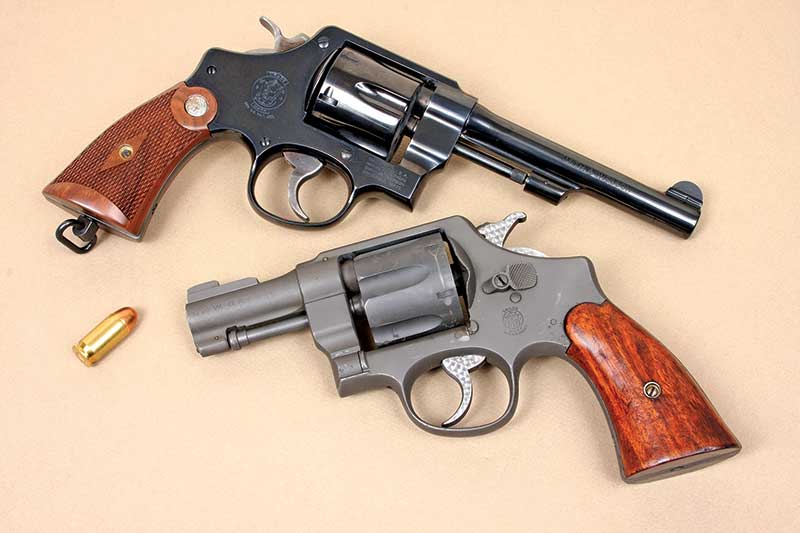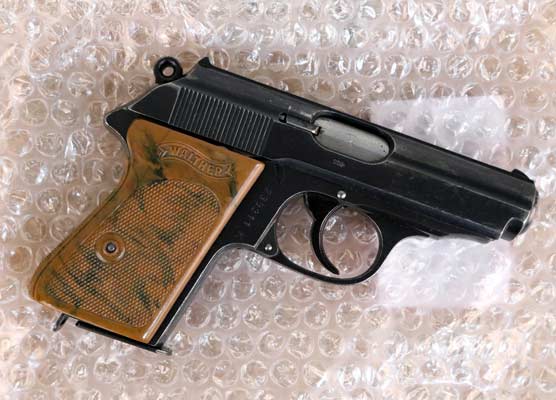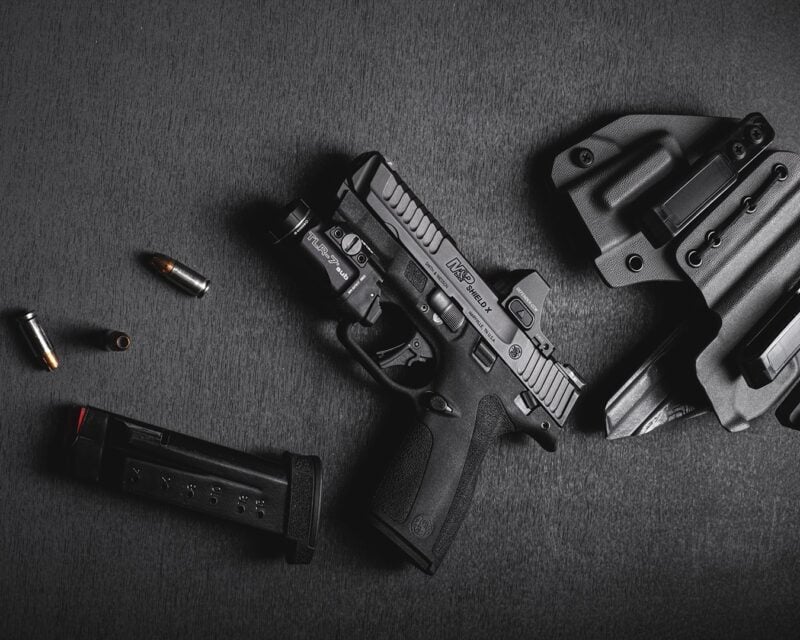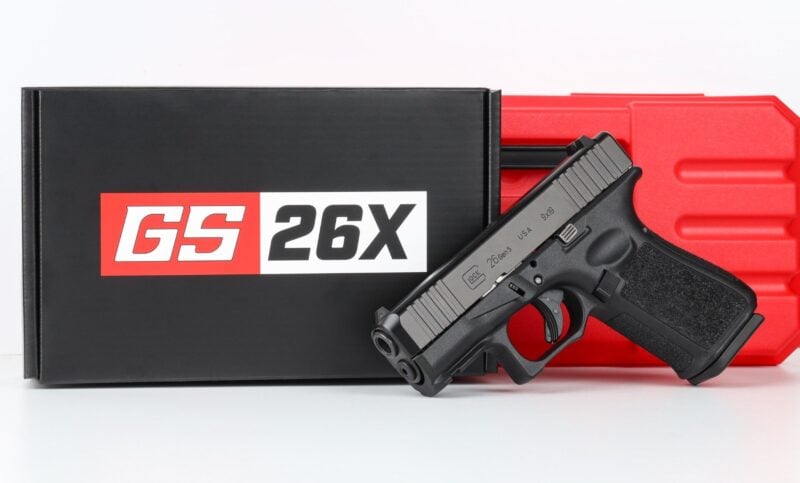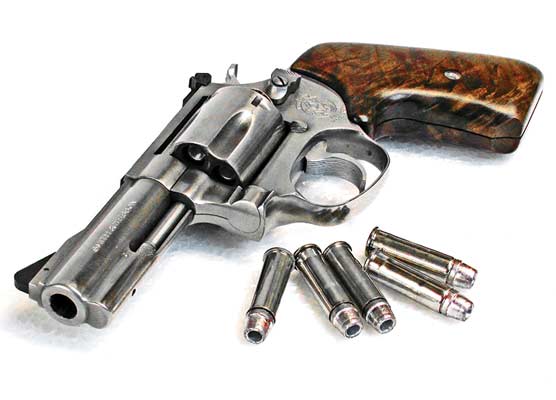Big-Bore Cut Down
In the late 1970s I spotted a cut-down S&W 1917 .45 ACP revolver in a gun book that really caught my eye. This was long before there were any factory short-barreled big-bore revolvers, so if you wanted such a thing, you had to make one. Someone had taken a beater military 1917, cut the barrel to about 2.5″, then hard-chromed it. They put a set of those early Pachmayr rubber grips on it, and to my eyes, had a perfect serious big-bore revolver for self-defense. Plus, it just looked cool. But in those days, even beater 1917s were hard to come by, and I moved on in life without making that dream come true.
Then the angels sang, and in the early 1980s, someone advertising in Shotgun News started to bring in Brazilian S&W 1917 contract revolvers. As I recall, they were made by S&W for Brazil in the 1930s, but don’t hold me to that. They were cheap too, around $150. They didn’t “grade” them so you took your chances. I bought three. One was fairly nice, one was okay and one was pretty tired, with pitting on the cylinder and outside of the barrel. But, the bore was shiny and the action decent. Looking them over, I decided my gunsmithing skills warranted I experiment on the beater — and save the better ones for later projects.
While the gun giving me the idea had a 2.5″ barrel, it also meant a good deal of work to make that happen. After measuring, I found if I nipped the barrel off right in front of the front ejector rod locking bolt housing (on the underside of the barrel), it would measure right at 3″ to the rear of the forcing cone. Good enough for me, and saved me no-end of work shortening the ejector rod, welding the housing back on and such. A minute or two with a hacksaw and the “pocket” .45 started to happen.
I’ve been a life-long hobby gunsmith and have amassed a good selection of tools. Even back then, I had a bead-blaster, jewelling tools, drill press, belt sander/grinder and plenty of other hand tools. So, with some judicious thought, and even more careful handwork, it came together. The front sight was a problem, but I scrounged a generic one, filed/sanded it to fit the barrel contour, then silver-soldered it to the barrel. I also put a screw in it to fill the screw hole, just for looks. I also carefully widened the rear groove, squaring it up to fit the front blade width.
I slicked up the action (note the amateur jewelling on the hammer and trigger … just had to try that), used different grits of wet or dry paper to work out some of the pitting (but most were too deep so stopped before I got into trouble), then bead-blasted the frame and parts. I was experimenting with doing Parkerizing then, thanks to chemicals from Brownells (it’s actually easy to do — you should try it), so the blasted gun went into the pot. About ten minutes later everything was grey.
After reassembling it I hefted it and thought, “Hey, this is just as I imagined it would feel.” I opted to leave the smaller standard grips, but when fired, it does tend to bite at the web of your hand. After some test firing and lowering the front sight some, my new .45 ACP pocket-pounder was done.
I promptly gave it to my old friend, Don Hacklander (owner of San Diego Police Equipment Company), who needed it worse than I did. He “guarded” it for me for the next 28 years or so, until only recently gifting it back to me when I told him how much I wished that old gun was still around. “Hell, I still have it. It’s been my bed-table gun, I’d be proud to give it to you.” Just like that my first big-bore project gun came home.
I dug it out for this column and fired it a bit, along with a brand new S&W 1917 (5.5″ barrel). I honestly forgot how good that little-big gun shot. I’m not sure why, but for some reason, it shoots under 2″ at 15 yards all the time, and some groups chase 1.25″! The new gun actually shot about the same, with a 1.65″ being one of the better groups. Interestingly enough, after firing six loads through them, an old box of Black Hills 230-gr. lead RN reloads delivered the winning groups. I’ve often heard 1917s don’t like lead due to the shallow rifling in the bores, but these two liked it just fine. This also allowed me to compare some velocities of .45 ACP loads from a shorter-barreled revolver and a longer one. I thought we’d learn something, but actually the difference was barely noteworthy.
If I did this project again I’d round the butt, de-horn the edges, bevel the front of the cylinder, nip the hammer spur off and maybe do a Hi-Viz front sight. Oh, and some different grips would help with that biting in the web of my hand. If you have the urge, and some basic tools, don’t be afraid to tackle a project like this yourself. But don’t try anything you’re not confident you have the skills to manage. And practice on old broken guns first! As Clint Eastwood said, “A man’s gotta’ know his limitations.”

